TOP STORY

The 2021 NA Symposium was the 10th International Meeting on Neuroacanthocytosis Syndromes, held online on March 10th–12th, 2021. The COVID19 pandemic situation made our planned meeting in Barcelona on March 2020 to be suspended by one year, and finally took place online. The meeting followed the previous nine international symposia, the last of which was held in Dresden, Germany in March, 2018.
 The 2021 NA Symposium was the 10th International Meeting on Neuroacanthocytosis Syndromes, held online on March 10th–12th, 2021. The COVID19 pandemic situation made our planned meeting in Barcelona on March 2020 to be suspended by one year, and finally took place online. The meeting followed the previous nine international symposia, the last of which was held in Dresden, Germany in March, 2018. The 2021 NA Symposium was the 10th International Meeting on Neuroacanthocytosis Syndromes, held online on March 10th–12th, 2021. The COVID19 pandemic situation made our planned meeting in Barcelona on March 2020 to be suspended by one year, and finally took place online. The meeting followed the previous nine international symposia, the last of which was held in Dresden, Germany in March, 2018.
The setting of the meeting encouraged interactions, exchange of ideas and networking opportunities among the high number of participants from around the globe, including scientists, neurologists and specially patients and caregivers. A total of 27 oral communications were distributed in 8 sessions with topics ranging from molecular and cellular functions of VPS13 genes and proteins, their involvement in Neuroacanthocytosis Syndromes and finally clinical aspects and patients care. In addition, 5 posters were presented. Altogether, scientists and neurologists discussed recent advances and set the bases for next steps, action points, and future studies in close collaboration with the patient’s associations, which are always actively involved in the whole process. See a full article on the proceedings by Merce Masana , Manuel J. Rodriguez, Jordi Alberch here.
For a summary of the symposium from the perspective of patients and caregivers, see the article elsewhere in this issue.
 |
|
 |  |
Welcome to Issue 36
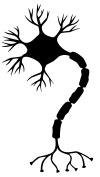 Thank you for reading this latest issue of NA News. We hope this finds you well and that you enjoy the issue, where you'll learn about what happened at the Barcelona symposium -- our tenth devoted to NA -- and you'll hear about the wonderful success of NA-USA, which has raised $100,000 to support a brain tissue study. We also include a roundup of research updates, patient news, and the latest in our series about speech intelligibility throughout the course of NA. For the latest updates from the Advocacy, don't forget to follow our international and USA Facebook pages. They are frequently updated with fresh news. Thank you for reading this latest issue of NA News. We hope this finds you well and that you enjoy the issue, where you'll learn about what happened at the Barcelona symposium -- our tenth devoted to NA -- and you'll hear about the wonderful success of NA-USA, which has raised $100,000 to support a brain tissue study. We also include a roundup of research updates, patient news, and the latest in our series about speech intelligibility throughout the course of NA. For the latest updates from the Advocacy, don't forget to follow our international and USA Facebook pages. They are frequently updated with fresh news.
NA USA completes $100,000 fundraising drive
 |
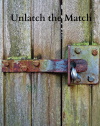 Neuroacanthocytosis Advocacy USA (NA-USA) announced its “Unlatch the Match” fundraising campaign on November 30, 2020, coinciding with #Giving Tuesday. The organization’s ambitious goal was to raise the $100,000 needed to fund Year 1 of the Neuropathology of Neuroacanthocytosis Project, a research effort examining brain tissue of ChAc and McLeod patients, to be carried out at the Icahn School of Medicine at Mount Sinai in New York. Ruth Walker, John Crary and Amber Tetlow are the primary people working on this project. (See Research). Neuroacanthocytosis Advocacy USA (NA-USA) announced its “Unlatch the Match” fundraising campaign on November 30, 2020, coinciding with #Giving Tuesday. The organization’s ambitious goal was to raise the $100,000 needed to fund Year 1 of the Neuropathology of Neuroacanthocytosis Project, a research effort examining brain tissue of ChAc and McLeod patients, to be carried out at the Icahn School of Medicine at Mount Sinai in New York. Ruth Walker, John Crary and Amber Tetlow are the primary people working on this project. (See Research).
The fundraising appeal was helped along with a dollar for dollar match up to the first $50,000; hence the title of the fundraiser “Unlatch the Match.”
We are pleased to report that the full $100,000 was raised by mid-February. By April 15th, a grant agreement was fully executed between NA-USA and the Icahn School of Medicine, and the first $60,000 grant draw was sent.
Thank you to all who organised and participated in this stupendous undertaking!
 |  |
Patients and caregivers in focus at Barcelona Symposium
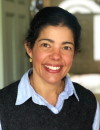 Even a global pandemic couldn’t stop the 10th International Symposium on Neuroacanthocytosis Syndromes from happening! The format had to change to a virtual event but I think everyone will agree it was a resounding success. Two speakers, Lori Quinn and Elina Tripoliti, shared their expertise in sessions for patients and caregivers. Their sessions were very well received and the scientists and researchers fed back how glad they were to have Lori and Elina speak, as they do not often get to hear, first-hand, such experiences. Even a global pandemic couldn’t stop the 10th International Symposium on Neuroacanthocytosis Syndromes from happening! The format had to change to a virtual event but I think everyone will agree it was a resounding success. Two speakers, Lori Quinn and Elina Tripoliti, shared their expertise in sessions for patients and caregivers. Their sessions were very well received and the scientists and researchers fed back how glad they were to have Lori and Elina speak, as they do not often get to hear, first-hand, such experiences.
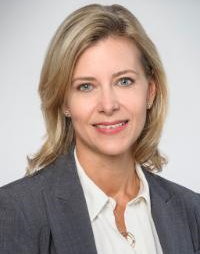 Lori is a physiotherapist and Director of the Neurorehabilitation Research Lab at Teachers College, Columbia University. She discussed the challenges that patients and carers encounter when trying to find physiotherapy due to the scarcity of information on neuroacanthocytosis syndromes. Physios can draw on exercises and treatment plans devised for patients with Huntingdon’s disease. Lori is a physiotherapist and Director of the Neurorehabilitation Research Lab at Teachers College, Columbia University. She discussed the challenges that patients and carers encounter when trying to find physiotherapy due to the scarcity of information on neuroacanthocytosis syndromes. Physios can draw on exercises and treatment plans devised for patients with Huntingdon’s disease.
Even a global pandemic couldn’t stop the 10th International Symposium on Neuroacanthocytosis Syndromes from happening! The format had to change to a virtual event but I think everyone will agree it was a resounding success.
Two speakers, Lori Quinn and Elina Tripoliti, shared their expertise in sessions for patients and caregivers. Their sessions were very well received and the scientists and researchers fed back how glad they were to have Lori and Elina speak, as they do not often get to hear, first-hand, such experiences.
Also discussed were the types and duration of exercise that could be taken to achieve therapeutic benefit. Lori mentioned that she was in the process of submitting an abstract to the Movement Disorder Society (MDS) Journal about the possible benefits of yoga.
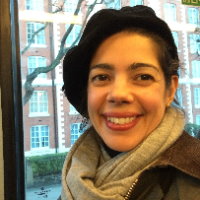 Elina is a Clinical Specialist Speech and Language Therapist at National Hospital for Neurology and Neurosurgery UCL London and has been working with Alex Irvine for a number of years. Elina told everyone that unfortunately there is extremely little written material out there but that there is progress. The session covered issues around mouth guards which was extremely interesting and also covered Karaoke! Elina spoke about how singing can help patients as it activates both sides of the brain and Alex is testament to the enjoyment of karaoke. Elina is a Clinical Specialist Speech and Language Therapist at National Hospital for Neurology and Neurosurgery UCL London and has been working with Alex Irvine for a number of years. Elina told everyone that unfortunately there is extremely little written material out there but that there is progress. The session covered issues around mouth guards which was extremely interesting and also covered Karaoke! Elina spoke about how singing can help patients as it activates both sides of the brain and Alex is testament to the enjoyment of karaoke.
If anyone would like to share their experience with regards to physiotherapy, speech and language therapy or in fact anything that they think might help others, please do let us know so we can share it in the next NANews. It could make the world of difference to someone and we can reactivate a “Tips” section.
 |  |
NA PEOPLE: Adrian Danek: Global Communication
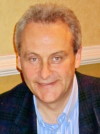 As our capacities for endurance, obedience and compassion continue to be challenged by the corona pandemic, one of its rare positive side-effects is experienced by almost everyone. Video conferencing has introduced new ways to communicate in science (see last newsletter) and the novel format has been used for the 10th NA symposium in March. As our capacities for endurance, obedience and compassion continue to be challenged by the corona pandemic, one of its rare positive side-effects is experienced by almost everyone. Video conferencing has introduced new ways to communicate in science (see last newsletter) and the novel format has been used for the 10th NA symposium in March.
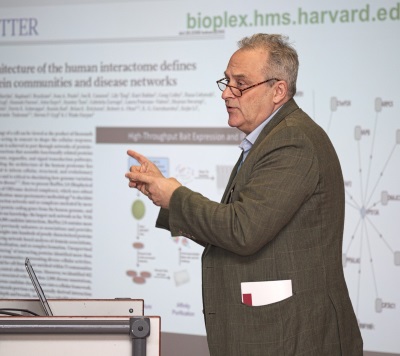 As our capacities for endurance, obedience and compassion continue to be challenged by the corona pandemic, one of its rare positive side-effects is experienced by almost everyone. Video conferencing has introduced new ways to communicate in science (see last newsletter) and the novel format has been used for the 10th NA symposium in March. As video conferences are increasingly popular also in less formal settings and the technical preconditions are widely available, it came naturally to use one of the evenings that are otherwise spent for festive December gatherings but were now freed for a virtual end of the year neuroacanthocytosis meeting. As our capacities for endurance, obedience and compassion continue to be challenged by the corona pandemic, one of its rare positive side-effects is experienced by almost everyone. Video conferencing has introduced new ways to communicate in science (see last newsletter) and the novel format has been used for the 10th NA symposium in March. As video conferences are increasingly popular also in less formal settings and the technical preconditions are widely available, it came naturally to use one of the evenings that are otherwise spent for festive December gatherings but were now freed for a virtual end of the year neuroacanthocytosis meeting.
Out of our global community approximately 50 patients, carers, medical people and scientists met virtually for two hours on December 7. Participants were from at least twelve countries, spanning at least 10 time zones. In spite of absent “Glühwein”, cookies, and the like, a convivial atmosphere of informal exchange and camaraderie developed. An initial introductory round informed the participants about the developments of the US NA advocacy. Further topics ranged from the announcement of acquisition of funding for the virtual meeting by the Barcelona group (congratulations!) to the current state of availability of Western blot testing and of work on the patient registry. Recent basic science developments were explained by Ody Sibon (Groningen), Liz Conibear (Vancouver) and we experienced a lab visit as we virtually accompanied Aaron Nieman (Stony Brook) looking after his yeast cultures.
The meeting was felt so useful that it was almost immediately followed up (January 18), this time devoted to medical questions and answers. It is obvious that these formats need to be continued and developed further. Medical Q&A meetings held in languages other than English would be natural sequels, but also regular scientific mini-symposia must be considered. The novel formats were unexpectedly forced upon us but for ultra-rare diseases they have the potential to further overcome patient isolation and science fragmentation by live interaction on a truly global level.
A second Forum was held on 5 July with the discussion of McLeod Syndrome. Future dates are: 27 September when Ruth Walker will lead the group on the topic of Neuropathology and 31 January 2022 with Kevin Peikert, “proteins & scramblases”.
 |  |
Rare Disease Day: Available Therapies and Searching for New Ones
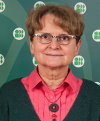 In the spring we received news from Teresa Zoladek in Poland. She organised another Herculean event for Rare Disease Day in February, this time online. Joanna Kaminska made the presentation about using yeast as a model to study neurodegenerative diseases. We had 165 participants, more than last year! The Programme and abstracts for the Zoom event can be viewed here. In the spring we received news from Teresa Zoladek in Poland. She organised another Herculean event for Rare Disease Day in February, this time online. Joanna Kaminska made the presentation about using yeast as a model to study neurodegenerative diseases. We had 165 participants, more than last year! The Programme and abstracts for the Zoom event can be viewed here.
Working on specific speech sounds and overall communication - Part 1A
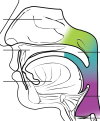 Following on from Issue 35, we continue our series on how Neuroacanthocytosis (NA) can affect speech and what can be done. In this part we will focus on specific ways to work with speech as well as ways to protect communication overall. Following on from Issue 35, we continue our series on how Neuroacanthocytosis (NA) can affect speech and what can be done. In this part we will focus on specific ways to work with speech as well as ways to protect communication overall.
There are three main subsystems of speech that we work with: phonation (voice), articulation and prosody (melody of speech or intonation).
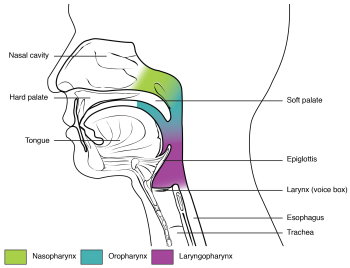 Following on from Issue 35, we continue our series on how Neuroacanthocytosis (NA) can affect speech and what can be done. In this part we will focus on specific ways to work with speech as well as ways to protect communication overall. Following on from Issue 35, we continue our series on how Neuroacanthocytosis (NA) can affect speech and what can be done. In this part we will focus on specific ways to work with speech as well as ways to protect communication overall.
There are three main subsystems of speech that we work with: phonation (voice), articulation and prosody (melody of speech or intonation).
Voice is linked to our personality. Variations in pitch and volume and timbre are what gives our voice its character. With NA volume can either be reduced or have unpredictable bursts of loudness. Voice exercises aim at strengthening the voice and getting as much of its character back. Singing can be a great gateway through to voice work, even simple tunes like “Happy Birthday”, or “you are my sunshine”. In case of tight/strained voice we may need to work on relaxing the voice through yawn-sign (it relaxes the pharyngeal wall!), or other techniques.
Articulation can be a major part of our work. Depending on the number of face muscles affected by NA and the degree they respond to exercising, we can choose to work on those that can deliver the maximum effect for minimum effort. Working on lip sounds (like /p/b/) can usually be the most effective way to improve (see examples from Alex Irvine below). The tongue controls the majority of the sounds in our Indo-European languages and it can be affected by NA. For example, /k/ and /g/ sounds require the back of the tongue to raise to the palate and the /t/d/ sounds need the tongue tip to move up to the front teeth. We never think about the amount of precise and well co-ordinated movements required for speech and evidently, we produce 180 sounds per minute.
Maintaining the personal intonation or rhythm of speech is a major aspect of communication, as it conveys most of our intended meaning. In George Bernard Shaw, Eliza Doolittle’s Cockney accent becomes the central narrative of the play, in the assumption that transforming her accent will give her middle-class respectability. In therapy we often aim at unravelling the individual accent as opposed to changing it or suppressing it. The most useful way of working on intonation is through asking questions, or practicing anything that has a lot of exclamation points! Vowels also play a big part in intonation and accent: think of the way you pronounce “scone”: is it more like “stone” or “gone”? There is a “UK scone App” plotting scones’ pronunciation across the British Isles!
Poetry has a big place in our work as it can link the rhythm of a language, the breath groups, sounds and images, even memories from childhood.
When working on speech one needs to take into account not just the muscles of the face and trunk involved but also the age of onset of the disease and the particular timing of intervention: there are no studies to show when it is more effective to have therapy input. It is often the case that clinically “the earlier the better”, not just for the particular speech issue but for nurturing and supporting communication as a whole. Continuing to participate in as many activities and life roles as before the diagnosis for as long as possible is the ultimate aim of any intervention. For example, adjustments at work may include the use of a voice amplifier. Another recent development is “voice banking”, (see for example Acapela.com), a way to synthesise and store one’s voice early on in the disease process and use it later on through the “type-to-speech” devices. Any use of communication aid requires support and training of the family and friends.
The rare and disperse nature of the disease presents practical challenges for both the clinician and the patient/families involved. The clinician must work in a team, not just to share knowledge but to maximise all aspects of functioning and to allow communication to happen. A systematic, longitudinal approach to describing communication changes throughout the disease process is needed to support research into optimal treatment approaches and the incorporation of advancements in imaging and physiology for improvement in communication.
Examples of articulation exercises:
Pppppp/ and /bbbbbb/
- Please Paul, pause for applause.
- Peppercorn pudding and pelican pie
- Plain plump Pansy played picquet pleasantly
- The big baker bakes black bread
- “The bun is better buttered”, Billy muttered.
- The busy bee buzzed busily around the busy beehive.
- Big blue blisters bleeding badly
- Betty blue blows big black bubbles
VVVVV
- A vicarious veteran was bitten by a venomous snake
- Victoria was victimising a very vivacious Vivaldi.
- Violet voted various vets to be vetted.
- Vivian the vet visited the various vipers.
- The Viking were victorious at ending the violent war of Venetians.
The illustration above displays the “mid-sagittal view of the speech structures.”
Mid-sagittal view of the speech structures. The speech structures shown here are involved in breathing, articulation, resonance, voice and speech production. The speech structures include the tongue, jaw, lips, larynx, soft palate and pharynx.
From Barkmeier-Kraemer JM and Clark HH (2017). Speech-Language Pathology Evaluation and Management of Hyperkinetic disorders affecting speech and swallowing function. In Tremor and Other Hyperkinetic Movements.
References:
Barkmeier-Kraemer JM and Clark HH (2017). Speech-Language Pathology Evaluation and Management of Hyperkinetic disorders affecting speech and swallowing function. In Tremor and Other Hyperkinetic Movements.
Irvine G and Irvine G (2013). An Ultra-rare Disease? Where do we go from here? Tremor and Other Hyperkinetic Movement Disorders.
Peikert K, Danek A and Hermann A. (2018). Current state of knowledge in Chorea-Acanthocytosis as core Neuroacanthocytosis syndrome. European Journal of Medical Genetics, 61: 699-705.
Our thanks to Elina Tripoliti & Jacqueline McIntosh for continuing this series.
 |  |
Tune in to free webinar series on rare diseases
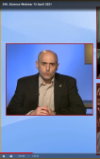 Susan Wagner, of NA USA, recommends tuning in to the 9-part (monthly), Science AAAS, Rare Diseases Webinar Series. The series expounds on many of the same hurdles we experience as NA patients, clinicians, researchers and advocates. The April 15 Science webinar, "The poor diagnosis of rare diseases: Overcoming deficits in information, awareness, and understanding", was the second webinar of the 9 part Rare Disease series running in 2021. Read on for an overview of this useful webinar. Susan Wagner, of NA USA, recommends tuning in to the 9-part (monthly), Science AAAS, Rare Diseases Webinar Series. The series expounds on many of the same hurdles we experience as NA patients, clinicians, researchers and advocates. The April 15 Science webinar, "The poor diagnosis of rare diseases: Overcoming deficits in information, awareness, and understanding", was the second webinar of the 9 part Rare Disease series running in 2021. Read on for an overview of this useful webinar.
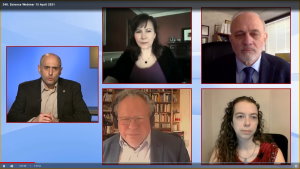 Susan Wagner, of NA USA, recommends tuning in to the 9-part (monthly), Science AAAS, Rare Diseases Webinar Series. The series expounds on many of the same hurdles we experience as NA patients, clinicians, researchers and advocates. Susan Wagner, of NA USA, recommends tuning in to the 9-part (monthly), Science AAAS, Rare Diseases Webinar Series. The series expounds on many of the same hurdles we experience as NA patients, clinicians, researchers and advocates.
The April 15 Science webinar, "The poor diagnosis of rare diseases: Overcoming deficits in information, awareness, and understanding", was the second webinar of the 9 part Rare Disease series running in 2021.
The Webinar Overview:
“Patients with rare diseases must often wait many years for a diagnosis—a quarter of patients wait over 4 years to be diagnosed, while 50% of patients must live with no accurate diagnosis. Why is this, and can it be improved? In this installment of our Rare Diseases Series, we will discuss the broad challenges faced by the rare disease community across the world. A significant part of the problem is the lack of awareness among the medical and scientific community, but there are also obstacles put up by medical insurance companies and a broad failure in the public domain to appreciate the hurdles faced by patients with rare diseases. Being without a diagnosis can impact a patient’s physical, mental, and emotional well-being, while receiving an accurate diagnosis can allow the patient and their family to move forward with a focus on managing future challenges.”
Moderator: Shawn Sanders, PhD of Science AAAS, Washington DC
Presenters: Kym Boycott, M.D., Ph.D. University of Ottawa
Jean-Louis Mandel, M.D., Ph.D. The French Foundation for Rare Diseases
William A. Gahl, M.D., Ph.D. National Institutes of Health Bethesda, MD
Anne O’Donnell-Luria, M.D., Ph.D.Broad Institute and Boston Children's Hospital
In general, the panel invoked a sense of synergy and optimism as we move rare disease diagnoses forward. Susan noted:
- US and Europe definitions of rare disease are different. Over 200 new diseases are described every year.
- The route to diagnosis can be hampered due to insurance coverage/ healthcare systems regulations. The presenters made a strong recommendation for both doctors and patients to independently pursue University/Academia researchers, Research Centers, such as the international ‘Rare Genome Center Project’, and to utilize the power of Advocacy Groups for direction and knowledge when diagnosis becomes limited through insurance and health care systems
- All presenters agreed and described the importance of timely diagnosis of rare disease.
- With recent breakthroughs in genetic testing the ability to diagnosis rare diseases has improved dramatically.
- Genetic Counselors are NEEDED. The genetic field will continue to see increase growth in the future. A plea was made by Dr. Bill Gahl that we recommend to young science students to consider pursuing a career in Genetics.
- An international rare disease database is key for collaborating and advancing rare disease diagnosis.
Details and free registration for future webinars can be found here.
 |  |
RESEARCH UPDATE
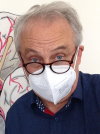 Adrian Danek and Gabriel Miltenberger-Miltenyi provide an update from Munich ¦ Ruth Walker & Adrian Danek ¦ Kevin Peikert, Andreas Hermann and Lucia De Franceschi ¦ Kevin Peikert & Lars Kaestner Adrian Danek and Gabriel Miltenberger-Miltenyi provide an update from Munich ¦ Ruth Walker & Adrian Danek ¦ Kevin Peikert, Andreas Hermann and Lucia De Franceschi ¦ Kevin Peikert & Lars Kaestner
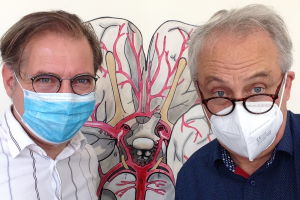 Adrian Danek and Gabriel Miltenberger-Miltenyi in Munich Adrian Danek and Gabriel Miltenberger-Miltenyi in Munich
The working group of Adrian Danek and Gabriel Miltenberger-Miltenyi in Munich continue with the free-of-charge chorein blot diagnosis, supported by the generous donation of seed money by Betty and Carl Pforzheimer to the Advocacy, in honour and in memory of Glenn Irvine.
Reports containing the obtained results for each patient are sent to the submitter and a detailed discussion of every case is offered.
In parallel, the Munich team continues with the genetic testing of ChAc patients; for details please contact danek@lmu.de or gmiltenyi@medicina.ulisboa.pt.
Currently, one of the major technical-scientific questions the team is focusing on, is the occurrence of rare cases of patients with seemingly normal chorein band occurrence in the Western blot, despite pathogenic mutations in the VPS13A gene. Six such cases were detected so far. This challenging question is supposed to be solved by genotype-phenotype association studies.
In addition, the team in Munich continues with the development of the zebrafish model for ChAc and McLeod Syndrome in collaboration with local colleagues at the German Center for Neurodegenerative Diseases (DZNE).
PHOTO: Gabriel Miltenberger-Miltenyi (L) and Adrian Danek (R)
_____
Targeting Lyn kinase in chorea-acanthocytosis: First experiences with a potentially disease modifying approach
Kevin Peikert, Andreas Hermann and Lucia De Franceschi
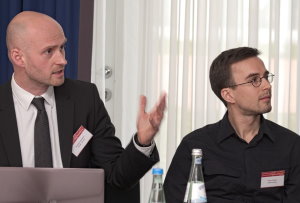 In red blood cells and neurons of chorea-acanthocytosis (ChAc) patients, the enzyme “Lyn kinase” is overactive which leads to impairment of some cellular processes. Lyn kinase is therefore considered to be one of the drivers of the disease. Suppression of its activity by several compounds can partially restore these damages in cell culture models. Fortunately, some of these drugs with the potential to inhibit Lyn are already in clinical use for leukaemia patients. In red blood cells and neurons of chorea-acanthocytosis (ChAc) patients, the enzyme “Lyn kinase” is overactive which leads to impairment of some cellular processes. Lyn kinase is therefore considered to be one of the drivers of the disease. Suppression of its activity by several compounds can partially restore these damages in cell culture models. Fortunately, some of these drugs with the potential to inhibit Lyn are already in clinical use for leukaemia patients.
Based on their preclinical work with Lyn kinase, an international consortium led by Andreas Hermann (University Rostock, Germany) and Lucia De Franceschi (University of Verona, Italy) sought to “translate” this knowledge as soon as possible to the benefit of the patients into the clinic.
First three patients were treated with an FDA approved Lyn kinase inhibitor, dasatinib. It was promising to see that some blood parameters responded to the treatment, however, there was no clinically evident positive effect on the central nervous system, e .g. no changes in seizure frequency or movement disorder. During these individual treatments, it became also clear that we do not know enough about the natural history of ChAc and about markers that reflect the progress of the disease – so called biomarkers. Altogether, it makes it difficult to judge if an intervention is effective or not, especially in such a small group of patients.
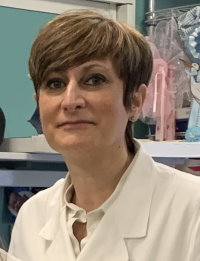 To further investigate the effect of Lyn kinase inhibition, we used a mouse model of ChAc. We first investigated the role of Lyn in basal ganglia from ChAc mice and then we tested dasatinib and nilotinib. In ChAc mice, it became clear that dasatinib did not sufficiently reach the most important part of the brain for this disease, the basal ganglia, which could be the reason for the lacking effect in the central nervous system of the individual patients. However, a substance of a next generation, nilotinib, was able to penetrate this region and to ameliorate several disease characteristics in this brain region. To further investigate the effect of Lyn kinase inhibition, we used a mouse model of ChAc. We first investigated the role of Lyn in basal ganglia from ChAc mice and then we tested dasatinib and nilotinib. In ChAc mice, it became clear that dasatinib did not sufficiently reach the most important part of the brain for this disease, the basal ganglia, which could be the reason for the lacking effect in the central nervous system of the individual patients. However, a substance of a next generation, nilotinib, was able to penetrate this region and to ameliorate several disease characteristics in this brain region.
At this point, the consortium gathered some promising data on a potentially beneficial effect of Lyn kinase inhibition for ChAc patients. However, the evidence is clearly still too preliminary to generally recommend this treatment approach in ChAc. We will keep the Neuroacanthocytosis community informed as soon as we have further evidence on the efficacy of this therapy.
We thank the Advocacy for Neuroacanthocytosis patients for the ongoing support and the provided funding. We thank also neuroacanthocytosis patients and their families for keeping high the attention on this rare disease and for being part of our lives as scientists.
TOP PHOTO: Andreas Hermann (L) and Kevin Peikert (R)
2ND PHOTO: Lucia De Franceschi
The studies have been published here:
Therapeutic targeting of Lyn kinase to treat chorea-acanthocytosis
Peikert K*, Federti E*, Matte A, Constantin G, Pietronigro EC, Fabene PF, Defilippi P, Turco E, Del Gallo F, Pucci P, Amoresano A, Illiano A, Cozzolino F, Monti M, Garello F, Terreno E, Alper SL, Glaß H, Pelzl L, Akgün K, Ziemssen T, Ordemann R, Lang F, Brunati AM, Tibaldi E, Andolfo I, Iolascon A, Bertini G, Buffelli M, Zancanaro C, Lorenzetto E, Siciliano A, Bonifacio M, Danek A, Walker RH, Hermann A*, De Franceschi L*. May 2021. Acta Neuropathol Commun 9:81. doi:10.1186/s40478-021-01181-y. *contributed equally.
Targeting Lyn Kinase in Chorea-Acanthocytosis: A Translational Treatment Approach in a Rare Disease
Peikert K, Glaß H, Federti E, Matte A, Pelzl L, Akgün K, Ziemssen T, Ordemann R, Lang F, The Network for Translational Research for Neuroacanthocytosis Patients, De Franceschi L*, Hermann A*. May 2021. Journal of Personalized Medicine 11(5):392. . *contributed equally.
_____
The Erythrocyte Sedimentation Rate may serve as a novel biomarker for Neuroacanthocytosis Syndromes
Kevin Peikert & Lars Kaestner
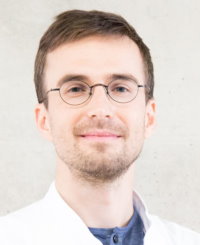 The erythrocyte sedimentation rate (ESR) is one of the oldest diagnostic methods. Already in ancient times it was known that the sedimentation of the red part of the blood can be very different. In fact, it was known even before the thermometer was invented that many diseases cause a higher ESR, which as we know today is also related to increased body temperature. The erythrocyte sedimentation rate (ESR) is one of the oldest diagnostic methods. Already in ancient times it was known that the sedimentation of the red part of the blood can be very different. In fact, it was known even before the thermometer was invented that many diseases cause a higher ESR, which as we know today is also related to increased body temperature.
Medically, there are two effects involved: (i) the increase of plasma proteins associated with inflammation, and (ii) also the erythrocyte shape contributes to the ESR. Irregular cell shapes, like sickle cells or acanthocytes decrease the ESR. So far in medical practice, no lower limit was established as being pathologic.
Recently, in a collaborative project between the neurologists at the University Hospitals in Rostock (Kevin Peikert, Hannes Glass and Andreas Hermann) and Munich (Adrian Danek) with biophysicists at Saarland University (Alexis Darras and Lars Kaestner, all Germany), a low ESR was proposed as a novel biomarker for the neuroacanthocytosis syndromes chorea-acanthocytosis and McLeod syndrome (Fig. 1). The clinicians and scientists summarized their results in two articles recently published in scientific journals: (Darras et al. 2021; Rabe et al. 2021).
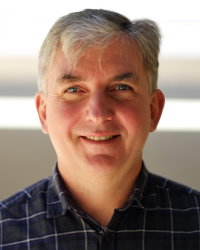 Although a lower limit for the ESR was found, these are just initial results that require further studies with a higher number of volunteers to proof the methods specificity. Furthermore, it remains still elusive if the ESR can be used as a putative biomarker for diagnosis, for disease progression of individual patients or response to a potential treatment. However, on the basis of these new data, the authors recommend measuring the ESR in all patients with suspected neuroacanthocytosis syndromes. Although a lower limit for the ESR was found, these are just initial results that require further studies with a higher number of volunteers to proof the methods specificity. Furthermore, it remains still elusive if the ESR can be used as a putative biomarker for diagnosis, for disease progression of individual patients or response to a potential treatment. However, on the basis of these new data, the authors recommend measuring the ESR in all patients with suspected neuroacanthocytosis syndromes.
Beside the fact that the ESR is among the oldest diagnostic methods, these measurements were combined with the latest scientific advancements in optical 3-dimensional microscopy and the application of artificial neuronal networks to analyze the data (Fig. 2).
Independent of the neuroacanthocytosis syndrome, the ESR was physically described in a completely new manner. Historically, ESR was described as sedimenting aggregates of red cells, but now it can be better understood as a percolating gel formed by the red cells in stasis.
Figure 1 (R) Figure 2 (L)
|
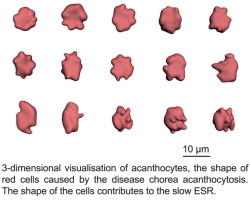
|
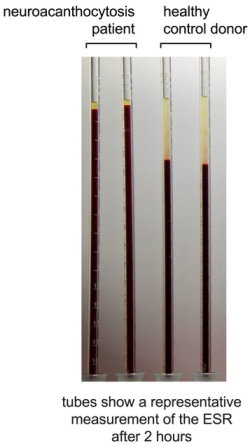
|
TOP PHOTO: Kevin Peikert
2ND PHOTO: Lars Kaestner
The studies have been published here:
Darras, Peikert, Rabe, et al (2021) Acanthocyte sedimentation rate as a diagnostic biomarker for neuroacanthocytosis syndromes: experimental evidence and physical justification. Cells 10:788.
Rabe A, Kihm A, Darras A, et al (2021) The Erythrocyte Sedimentation Rate and Its Relation to Cell Shape and Rigidity of Red Blood Cells from Chorea-Acanthocytosis Patients in an Off-Label Treatment with Dasatinib. Biomol 11:727.
_____
“Neuroacanthocytosis” – Overdue for a Taxonomic Update
Ruth Walker & Adrian Danek
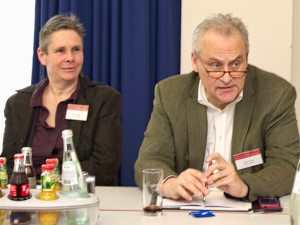 The term 'neuroacanthocytosis' (NA) is used for a spectrum of neurological disorders in which there are thorny red blood cells. While NA historically referred to disorders of lipoprotein absorption, we have promoted it as an overarching term for a group of basal ganglia disorders, with specific reference to two diseases that we defined as 'core' NA syndromes. 'Neuroacanthocytosis' has also been used to refer to a specific, now genetically-defined disease, otherwise known as 'chorea-acanthocytosis'. These various usages have resulted in diagnostic confusion, and in a number of cases have quite likely prevented the pursuance of precise, molecular, diagnosis. Disease nomenclature is an everevolving field, especially in the current era of expanding genetics, and naming proposals are often far from ideal. We, however, suggest that the term 'neuroacanthocytosis' should no longer be generally used and if so, only with appropriate understanding of its limitations. Further, we propose that chorea-acanthocytosis be renamed as “VPS13A disease” in accordance with its genetic etiology. The term 'neuroacanthocytosis' (NA) is used for a spectrum of neurological disorders in which there are thorny red blood cells. While NA historically referred to disorders of lipoprotein absorption, we have promoted it as an overarching term for a group of basal ganglia disorders, with specific reference to two diseases that we defined as 'core' NA syndromes. 'Neuroacanthocytosis' has also been used to refer to a specific, now genetically-defined disease, otherwise known as 'chorea-acanthocytosis'. These various usages have resulted in diagnostic confusion, and in a number of cases have quite likely prevented the pursuance of precise, molecular, diagnosis. Disease nomenclature is an everevolving field, especially in the current era of expanding genetics, and naming proposals are often far from ideal. We, however, suggest that the term 'neuroacanthocytosis' should no longer be generally used and if so, only with appropriate understanding of its limitations. Further, we propose that chorea-acanthocytosis be renamed as “VPS13A disease” in accordance with its genetic etiology.
PHOTO: Ruth Walker (L) and Adrian Danek (R)
The study has been published here:
Walker RH, Danek A. “Neuroacanthocytosis” – Overdue for a Taxonomic Update. Tremor and Other Hyperkinetic Movements. 2021;11(1):1. DOI:
_____
 |  |
Ruth Walker explains brain tissue study
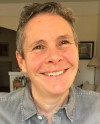 We are very excited to announce that Neuroacanthocytosis Advocacy-USA's successful fundraising drive will directly support a proposed project looking at brain tissue of people who were affected by NA syndromes. NA USA raised $100,000 to support research for one year, under the supervision of Dr. Ruth Walker, which is underway in the lab of Dr. John Crary, in the Pathology Department at Mount Sinai School of Medicine. We are very excited to announce that Neuroacanthocytosis Advocacy-USA's successful fundraising drive will directly support a proposed project looking at brain tissue of people who were affected by NA syndromes. NA USA raised $100,000 to support research for one year, under the supervision of Dr. Ruth Walker, which is underway in the lab of Dr. John Crary, in the Pathology Department at Mount Sinai School of Medicine.
 We are very excited to announce that Neuroacanthocytosis Advocacy-USA's successful fundraising drive will directly support a proposed project looking at brain tissue of people who were affected by NA syndromes. NA USA raised $100,000 to support research for one year, under the supervision of Dr. Ruth Walker, which is underway in the lab of Dr. John Crary, in the Pathology Department at Mount Sinai School of Medicine. Many thanks for all who have made donations! We are very excited to announce that Neuroacanthocytosis Advocacy-USA's successful fundraising drive will directly support a proposed project looking at brain tissue of people who were affected by NA syndromes. NA USA raised $100,000 to support research for one year, under the supervision of Dr. Ruth Walker, which is underway in the lab of Dr. John Crary, in the Pathology Department at Mount Sinai School of Medicine. Many thanks for all who have made donations!
Drs. Walker and Crary have been collaborating for several years now in developing and expanding the Neuropathology Division Brain Bank at Mount Sinai. We are able to perform detailed, systematic examinations of people who suffered from brain disorders, such as NA syndromes, but also including much more common diseases such as Parkinson’s disease and related disorders. In addition to our own studies, we often share these valuable brain tissues with other researchers.
Chorea-acanthocytosis (ChAc) and McLeod syndrome, are genetically distinct, but look very similar when brain tissues are examined down the microscope after death. The brains of people who suffered from a number of other neurodegenerative disorders, such as Parkinson’s, Alzheimer’s, and Huntington’s diseases have been found to contain clumps of protein, both inside and outside neurons. Analysis of the protein clumps has been informative in driving research into these disorders. NA syndromes are unusual in that such protein clumps have not been identified. In fact, the main observations in people with NA has been that there is loss of brain cells in specific regions, and a lot of scar tissue, known as “fibrosis”. We propose to use the latest neuropathological techniques, informed by recent research in the field such as that in yeast and other organisms, to look for other clues as to what is killing brain cells in these diseases. As part of this project Dr. Gabriel Miltenberger will be looking at constituents of lipids (fats) in the brain, as abnormalities of these may underlie the abnormal red cell shapes, and may also provide insights into brain cell damage. We are especially excited about the recent work from Drs. Jae-Sook Park and Aaron Neiman at Stony Brook, who have found that the two proteins affected in McLeod syndrome and ChAc appear to be in the same locations in yeast cells.
We will be collaborating with all of our colleagues in the field, and will be brainstorming at the upcoming 10th International Neuroacanthocytosis Meeting in March, to maximize the insights and advances that we can obtain from our research.
This project would not be possible without the generous gifts of people affected by NA syndromes, who have donated their brains and other body tissues to us to further our understanding of these awful diseases. Our gratitude also extends, of course, to their families, who work with us ahead of time to deal with the necessary paperwork and other logistics, and who make the critical phone call to us when the time comes, so that we can move quickly to get the most information from this valuable donation.
 |
|
 |  |
PATIENT NEWS: Dillon DeBoer
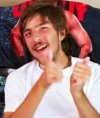 We're pleased to present this roundup of news from NA patients around the world. We have a special update from Dillon DeBoer in Iowa featuring an image gallery. We're pleased to present this roundup of news from NA patients around the world. We have a special update from Dillon DeBoer in Iowa featuring an image gallery.
We were delighted to get this update from Dillon DeBoer:
Hi, my name is Dillon DeBoer I am an only child. I live in Warrenville with my dad and mom, and dog Dixie. She is 15 years old. We call her grandma! She still acts like a puppy. I love her a lot. I am in charge of letting her out and feeding her. I like to give her treats and she just loves ice cubes! My family loves to laugh. We like to be silly.
Sometimes my mom embarrasses me, and calls me Bob, or Mr. Pickles, but I know it is all in good fun! My favorite thing to do is hanging out with my friends. I also love to swim, dance, and watch WWE. When I was a little dude, my mom turned on WWE. I was hooked immediately! I would climb up onto my tall dresser in my room and do flips onto my bed. I always scared my mom when I did that. She told me I was going to give her a heart attack one day! I have a huge collection of WWE DVD’s and WWE Wrestler action figures.
I am very good at X-Box, and can even use my controller upside-down behind my head! None of my friends can beat me at WWE wrestling on X-Box, not even my dad! I have been to several live WWE matches when they were in Chicago. I actually got to meet one of my Idols, Seth Rollins. He was really nice. I gave him a rock from my rock garden. He told me he would keep my special rock forever.
I have a public Facebook account about my story. It is called Dillon Rocks Warrenville. Check it out. There are a lot of pictures and videos of me. I get painted rocks from all over the United States. I have some rocks come from as far as Ireland and Costa Rica. It is like Christmas when I get the rocks. My mom cries every time I get them in the mail. I have a special rock garden in front of my house. I like to hang out in front of it, and listen to music. It is so nice to see my special rocks, and know how many people care about me.
--
Don't forget to send in your Patient News to Ginger Irvine
 |  |
In Memoriam: Riccardo Fagrelli
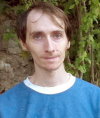 Alessio Fagrelli sent us this sad news: Alessio Fagrelli sent us this sad news:
I wanted to inform you that my brother Riccardo has just passed away.
Despite the NA he always smiled, until the end. He was very religious and went to Mass every Sunday; this gave him strength.
He spent his days writing emails on the laptop and doing some activities with former colleagues or the physiotherapist.
|
|
|